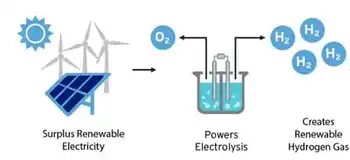Two towns phasing out meter readers
CARY, NORTH CAROLINA - Town meter readers are facing looming obsolescence now that plans are in place to equip homes and businesses with self-reading machines.
The new meters, slated to be installed in Cary and Morrisville over the next two years, will have wireless transmitters that Cary officials hope will beam readings to town hall no less than four times a day. These newfangled meters will not be cheap. Cary leaders estimate they will have to spend about $13 million to replace or retrofit the more than 50,000 traditional water meters in use now.
As expensive as they are, the machines make financial sense, said Karen Mills, the Cary finance director. She estimated that by eliminating 10 town meter-reading jobs, the new machines will save taxpayers up to $14 million between now and 2025.
That could mean fewer water and sewer rate hikes. The machines also will do what meter-readers cannot: Read all of the town's water meters a few times a day. Mills said the new meters will help the town better monitor water use, detect leaks, and come up with conservation methods. Homeowners may also be able to use the electronic meters while looking for leaks.
All that spells trouble for meter readers, whose profession may be destined for the employment dustbin. By 2014, the federal Bureau of Labor Statistics estimates, there will be fewer than 27,500 meter readers in America. That's a 44 percent decrease fro the roughly 49,500 meter readers in 2004.
Progress Energy alone has cut its meter-reading staff in the Carolinas from 200 to 85 over the past two years as it moved to meters that transmit signals to hand-held receivers. The new meters require fewer people to read the company's 1.2 million residential meters in the Carolinas, a change that Progress estimates will help it save $21 million a year across the company.
About the only place utility customers will not notice a change is on their bills. Progress, for instance, plans to use the savings generated by digital meters to lower its operating costs. "It's programs like mobile meter reading which keep our rates stable," said company spokeswoman Tanya Evans.
Related News

SC nuclear plant on the mend after a leak shut down production for weeks
COLUMBIA, SC - The V.C. Summer nuclear power plant, which has been shut down since early November because of a pipe leak, is expected to begin producing energy in a few days.
Dominion Energy says it has fixed the small leak in a pipe valve that allowed radioactive water to drip out. The company declined to say when the plant would be fully operational, but spokesman Ken Holt said that can take several days.
The plant was at 17 percent power Wednesday, he said.
Holt, who said Dominion is still investigating the cause, said water that leaked was part of the reactor cooling system.…




